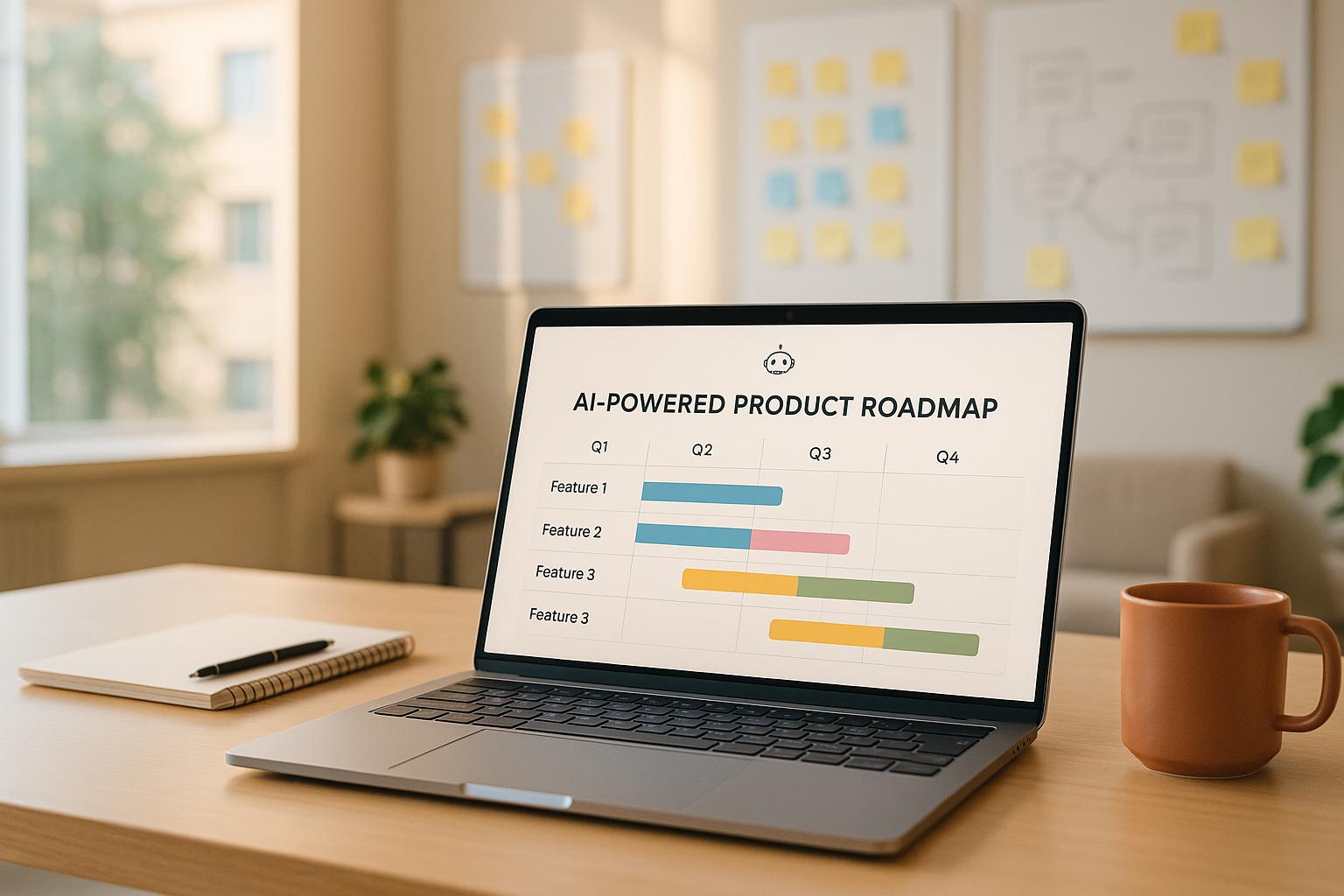How to Build a $10M Product with a $200K Budget: The New Startup Math
Taher Pardawala November 10, 2025
Building a $10M product with just $200K may seem daunting, but it’s achievable by focusing on lean development, prioritizing essential features, and leveraging modern tools like AI and no-code platforms. Here’s the approach in a nutshell:
- Start with a disciplined MVP: Allocate your budget using the 60-20-20 rule – 60% for development, 20% for design, and 20% for testing and infrastructure. Focus on solving a core user problem with minimal features.
- Validate assumptions early: Use user feedback, surveys, and prototypes to confirm product-market fit and avoid wasting resources on unnecessary features.
- Leverage AI tools: Automate repetitive tasks like testing and prototyping to save time and reduce costs.
- Choose scalable tech: Opt for frameworks like React Native or Node.js to minimize technical debt and ensure your product can grow with demand.
- Consider Engineering-as-a-Service: Partner with external teams for flexible, cost-effective development without the overhead of a full in-house team.
How To Create An MVP (Minimum Viable Product) – STEP BY STEP
Budget Allocation for MVP Development
When working with a $200,000 budget, every dollar counts. The success of your MVP hinges on smart, informed decisions about how to allocate these resources. Some investments bring immediate results, while others set the stage for future growth. Careful planning ensures your development stays focused and efficient.
The 60-20-20 Rule for Budget Allocation
A proven method for managing your MVP budget is the 60-20-20 rule. Here’s how it breaks down:
- 60% (~$120K) goes to development, which includes coding, system architecture, and building essential features.
- 20% (~$40K) is allocated to design and user experience, ensuring the product is intuitive and visually appealing.
- 20% (~$40K) is reserved for testing and infrastructure. This covers quality assurance, security measures, hosting, and system stability.
The largest share of the budget goes to development to ensure the core product is functional and scalable. Whether you hire an in-house team or work with an external engineering service, this allocation helps build a strong foundation for your MVP.
Feature Prioritization and Feedback Loops
Concentrate on developing features that provide real value to users. Start by identifying the minimum functionality needed to address user needs effectively. Tools like value-impact matrices can help you weigh the importance of features against the effort required to implement them.
User feedback is critical. Engage potential users through surveys, interviews, or prototype testing early in the process. This ongoing feedback loop allows you to fine-tune your product and ensures your budget is spent on solving actual user problems.
Reserving Budget for Post-Launch Iterations
It’s essential to set aside part of your budget for improvements after launch. Once your MVP is in the hands of real users, unexpected issues or new opportunities are bound to surface. By reserving funds for post-launch iterations, you can address bugs, respond to user feedback, and enhance usability without derailing your overall strategy.
A well-thought-out post-launch plan should focus on fixing critical issues, improving the user experience, and selectively adding features based on market demands. This approach keeps your product aligned with user expectations and evolving needs.
Using AI-Driven Tools and Lean Development Frameworks
Allocating resources wisely can make a world of difference, especially when combining AI tools with lean development practices. AI-driven tools are transforming software development by taking on tasks like writing code, designing interfaces, and creating test cases. This frees up developers to focus on solving tougher challenges and making strategic calls.
For example, automated testing tools streamline quality assurance by generating and running tests to catch issues early, cutting down on the need for time-consuming manual testing. Similarly, AI-powered rapid prototyping allows teams to validate ideas quickly and efficiently.
Lean development methods complement this approach by prioritizing rapid iterations, reducing waste, and incorporating continuous user feedback. By focusing on building core features and refining them based on user input, startups can manage tight budgets more effectively while avoiding expensive course corrections.
The magic lies in finding the right balance between AI tools and human expertise. AI shines when it comes to automating repetitive tasks and ensuring consistency, but developers remain essential for handling complex business logic, making critical security decisions, and designing systems that can scale. This thoughtful mix of AI and human skills paves the way for smarter, more cost-efficient development.
sbb-itb-51b9a02
Cost-Effective Engineering Practices and Tech Stack Choices
When it comes to maximizing ROI, making smart engineering decisions is just as important as careful budget planning and lean development. The right choices early on can set the stage for success, while missteps can lead to expensive setbacks. Picking the right tech stack is particularly crucial – it helps avoid technical debt and ensures your foundation is built for both immediate needs and future growth. These decisions act as the linchpin between building an MVP and achieving sustainable, scalable growth.
Minimizing Technical Debt for Long-Term Scalability
Taking shortcuts during development might seem like a time-saver, but it often leads to technical debt – a problem that becomes more expensive to fix over time. A modular architecture, covering everything from authentication to core functionality, can save you from costly overhauls later.
Using cross-platform frameworks like React Native or Flutter can also simplify mobile development, reducing time and effort without compromising quality. Beyond that, maintaining strict coding standards, automating code reviews, and keeping thorough documentation ensures knowledge is preserved and onboarding new team members is smoother.
Choosing the Right Tech Stack for Your MVP
Once you’ve built a solid foundation, selecting the right tech stack becomes the next priority. The goal is to strike a balance between speed and scalability. Depending on your team’s expertise and project needs, you might consider:
- Vue.js with Nuxt.js for rapid development.
- Node.js for quick prototyping.
- GoLang for tasks requiring high performance.
The key is to choose tools that align with your team’s strengths while supporting your growth objectives.
Engineering-as-a-Service: A Scalable Model
Instead of committing to the fixed costs of a full in-house team, many startups are turning to Engineering-as-a-Service (EaaS) models. This approach transforms engineering expenses into flexible, scalable costs, often resulting in savings of 15–30% [1].
Fractional leadership is another cost-efficient strategy. As highlighted by Shiny Blog, roles like fractional CFOs, COOs, or CTOs provide high-level expertise tailored to early-stage business needs [1].
"A fractional CFO can architect your Zero-Based Budgeting implementation, a fractional COO can overhaul your supply chain, and a fractional CTO can lead your digital transformation – all at a cost that aligns with your current growth stage." [1]
Companies like AlterSquare offer tailored EaaS solutions, such as their 90-day MVP program. This program includes discovery, design validation, agile development, and post-launch support, delivering results comparable to an internal team while keeping flexibility at the forefront.
To ensure success with EaaS, it’s essential to establish clear SLAs and start with pilot projects before committing to larger partnerships [1].
Validating Assumptions and Achieving Product-Market Fit
When building an MVP with a tight $200,000 budget, every decision must be deliberate and backed by data. Success hinges on aligning the product with real customer needs, using user feedback to guide development. This approach often separates startups that fail from those that grow into $10 million products.
Consider this: only 4% of SaaS startups ever reach $1 million in Annual Recurring Revenue (ARR), and a mere 0.4% make it to $10 million [2]. The winners aren’t always the ones with the most groundbreaking ideas – they’re the ones that validate their assumptions early and adapt based on genuine customer insights.
Hypothesis-Driven Development
Successful startups don’t gamble on guesses. Instead, they treat every assumption as a hypothesis to test. For instance, if you believe "Small business owners will pay $50/month for automated invoicing", that’s a hypothesis. You can test it through landing pages, customer interviews, or showcasing prototypes.
The key is to create structured opportunities to engage with customers [3]. These touchpoints provide valuable insights into how users interact with your product. And when a hypothesis proves incorrect, adopt a "fail fast" mindset [3] to quickly shift resources toward more promising ideas.
Tracking Metrics to Guide Iterations
Metrics are your north star as you work toward product-market fit. For SaaS businesses, customer churn rate and Monthly Recurring Revenue (MRR) churn are critical to monitor [2]. If customers are leaving faster than you can replace them, no amount of new features will fix the problem. Track these metrics weekly to catch red flags early.
Another key metric is time-to-value – how quickly users experience the benefits of your product. If it takes too long for customers to see value, adoption will suffer. Investing in a smooth onboarding process can help users understand and benefit from your product faster, reducing churn [2].
Engagement metrics like daily active users and feature adoption rates also provide valuable guidance. Instead of spreading resources thin by developing new features, focus on improving the ones users already love. This targeted approach ensures you’re making the most of your budget.
Methods for Rapid Validation
To validate your ideas quickly and affordably, prioritize actionable methods. User interviews and targeted surveys are cost-effective ways to confirm assumptions and uncover pain points. Prototypes or simple demonstrations, combined with these tools, can reveal whether your product resonates with potential customers [2].
Reaching product-market fit is rarely an overnight success. For most SaaS startups, it takes about three years to grow from $0 to $1 million ARR [2]. But with a disciplined approach to validation and iteration, you can accelerate this timeline and stretch your $200,000 budget further. This steady cycle of testing and refining lays the foundation for scalable growth.
Conclusion: Blueprint for Scalable Success
Turning a $200K budget into a $10M product isn’t just ambitious – it’s achievable with strategic planning, disciplined execution, and the right partnerships. This blueprint outlines how to make every dollar count while setting the stage for long-term scalability.
Key Steps to Success
The journey from a lean MVP to a multi-million-dollar product hinges on a few critical phases. It starts with disciplined budget allocation. By prioritizing resources for development, validation, and essential iterations, you avoid wasting funds on non-essential features and focus on what truly matters.
Next, AI-driven tools can significantly cut development costs without compromising quality. Generative AI and automation provide startups with the ability to iterate quickly while minimizing technical debt. The I.D.E.A.L. framework is one such structured approach that promotes lean, efficient development cycles.
Equally important are scalable engineering practices. Choosing the right tech stack early on, adhering to clean architecture principles, and avoiding shortcuts that lead to costly maintenance later are decisions that lay the groundwork for handling future growth. These practices ensure that your MVP evolves into a platform capable of supporting substantial revenue increases.
Finally, continuous validation and iteration are vital. Staying connected to customer feedback and making data-driven decisions ensures that every step forward aligns with market needs. This process reinforces the importance of lean, focused development that adapts as you grow.
The Role of Expert Partnerships
Strategic partnerships are the secret weapon for startups looking to scale effectively. No founder can tackle every technical challenge alone, and that’s where expert partnerships come into play.
By collaborating with experienced engineering teams, startups can accelerate timelines, control costs, and maintain quality as they grow. These partnerships go beyond traditional outsourcing; they function as an extension of your team, offering specialized expertise and the flexibility to scale when demand increases. Think of it as Engineering-as-a-Service – an approach that allows founders to focus on strategy, customer relationships, and business growth while ensuring a solid technical foundation.
With a disciplined $200K budget, validated learning, scalable architecture, and the right partnerships, your MVP can transform into a thriving $10M product, setting the stage for exponential growth and long-term success.
FAQs
How can startups decide which features to prioritize for their MVP while staying within a $200,000 budget?
Startups can prioritize MVP features by zeroing in on the core problem their target audience faces. The key is to focus on the must-have functionalities that directly address users’ main pain points. Skip the temptation to include ‘nice-to-have’ features that don’t help validate your business assumptions or move you closer to product-market fit.
To keep costs in check, adopt lean development practices, such as the I.D.E.A.L. framework, to systematically test and refine your ideas. Take advantage of affordable tools and AI-powered solutions to simplify the development process. Regularly gather feedback from early users to ensure you’re building only what genuinely matters. This strategy allows you to deliver value without overspending on unnecessary extras.
What are some examples of AI tools that can help startups save money and streamline the MVP development process?
AI tools can play a huge role in saving costs and improving efficiency during MVP development by taking over repetitive tasks and enhancing decision-making. Take code generation tools like GitHub Copilot, for example – they assist developers by speeding up code writing and even reviewing, which can save a ton of time. Similarly, no-code and low-code platforms such as Bubble and Adalo, powered by AI, allow startups to create working prototypes without needing a large engineering team. This makes building a product much more accessible and budget-friendly.
On top of that, AI-driven analytics tools like Mixpanel or Amplitude provide founders with deep insights into user behavior. These insights can guide smarter iterations and help validate key assumptions more quickly, ensuring your MVP evolves in the right direction.
Using these tools, you can cut down development time, avoid unnecessary technical debt, and direct your resources toward delivering the best possible value for your audience.
What are the advantages of using Engineering-as-a-Service for startups looking to scale on a budget?
Engineering-as-a-Service (EaaS) gives startups a flexible and budget-friendly way to develop and expand their products without the need to manage a full in-house team.
With access to on-demand engineering talent, startups can adjust resources as needed to match project demands. This means they avoid long-term commitments and keep payroll costs in check. Plus, EaaS providers often come with specialized skills and efficient workflows, which can lead to quicker development timelines and a reduced chance of accumulating technical debt.
This approach is particularly helpful for startups operating on limited budgets. It allows them to channel their energy into core business goals while still benefiting from top-tier engineering support – at a fraction of the cost of building a traditional in-house team.








Leave a Reply